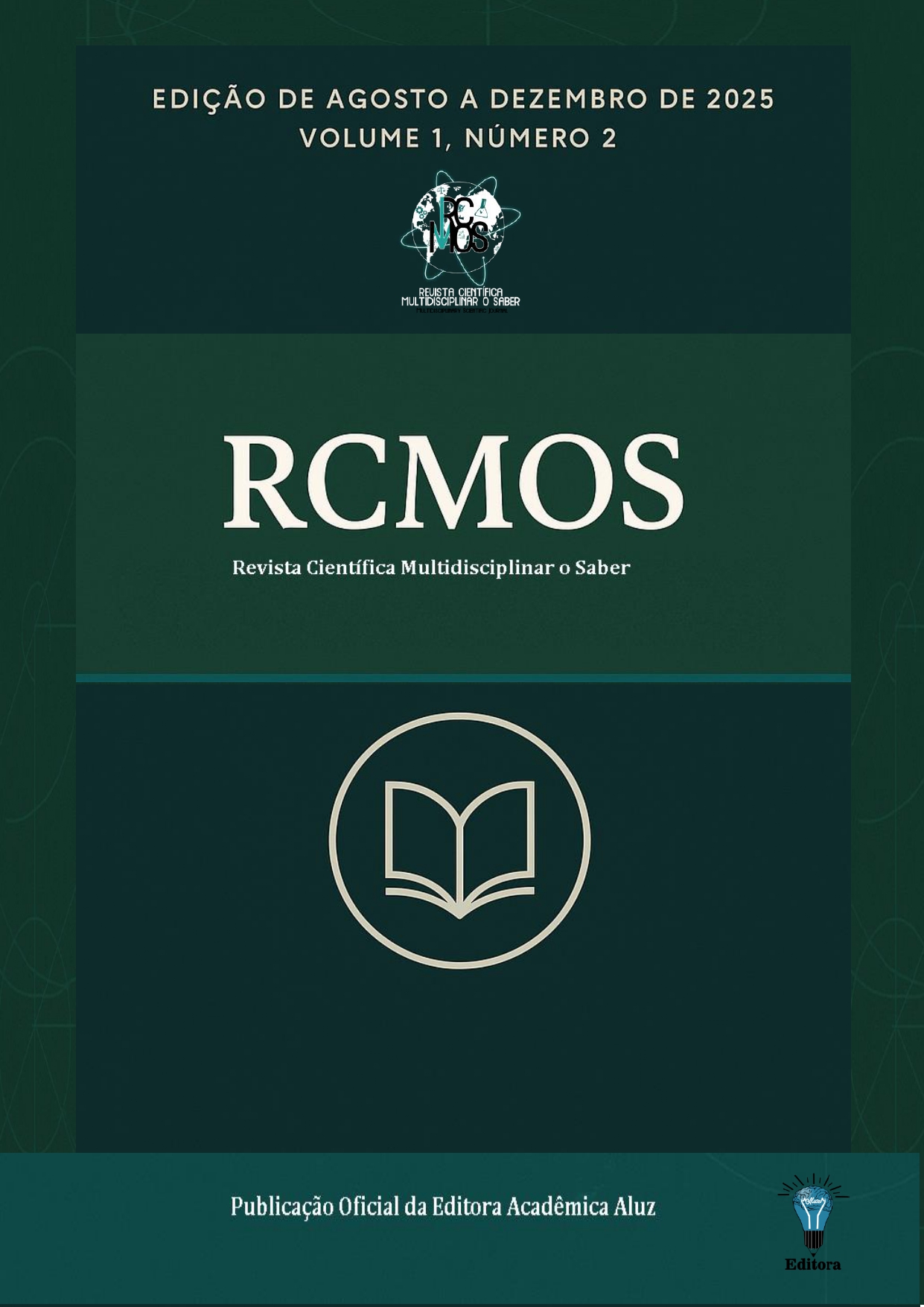Comparative analysis of the biomechanical aspects of glass fiber and polyethylene fiber (RIBBOND) posts – literature review
Comparative analysis of the biomechanical aspects of glass fiber and polyethylene fiber (RIBBOND) posts – literature review
DOI:
https://doi.org/10.51473/rcmos.v1i2.2025.1545Keywords:
Fiberglass posts. Polyethylene fibers (Ribbond). Dental rehabilitation.Abstract
Restorative dentistry aims to recover endodontically treated teeth with extensive structural loss, ensuring function, aesthetics, and mechanical strength. teeth that undergo endodontic treatment become more fragile due to the reduction of dental structure, increasing susceptibility to fractures and requiring techniques and materials that reinforce their integrity. among the most used alternatives are fiberglass posts and polyethylene fibers (ribbond), which exhibit favorable biomechanical and aesthetic properties, providing adequate retention and balanced distribution of masticatory forces. This study aimed to analyze, through an integrative literature review, the recommendations, clinical indications, and therapeutic strategies related to the use of fiberglass posts and polyethylene fibers in structurally compromised teeth. the adopted methodology consisted of a systematic search in the pubmed, scielo, lilacs, and google scholar databases, covering the period from 2015 to 2025, using descriptors such as “fiberglass posts,” “polyethylene fiber,” “ribbond,” “composite resins,” and “biomimetic materials.” original articles and review papers published in portuguese and english, available in full and directly addressing the topic, were included. Excluding criteria comprised studies lacking relevant clinical data, unpublished academic works, abstracts, and books. The selection of studies considered clinical relevance, scientific evidence, and applicability in restorative dentistry. The results demonstrate that fiberglass posts present an elastic modulus similar to dentin, excellent adhesion, mechanical strength, favorable aesthetics, and ease of application. They are indicated for teeth with extensive coronal loss requiring intraradicular retention. limitations include inadequate adaptation in wide or irregular root canals, excessive resin cement thickness, and adhesive failures, which may compromise restoration longevity. polyethylene fibers (ribbond), on the other hand, stand out for their biomimetic behavior, high flexibility, translucency, and ability to evenly distribute masticatory forces, promoting repairable fractures and preserving the remaining dental structure. techniques such as “wallpapering” and “rollover” enhance retention and adhesion, increasing the clinical effectiveness of the material. studies indicate that, in certain situations, ribbond can replace fiberglass posts, achieving satisfactory functional and aesthetic results. The choice between fiberglass posts and polyethylene fibers depends on the amount of remaining dental structure, tooth position, type of functional load, and the clinician’s experience. Despite the proven effectiveness of both materials, further longitudinal studies and robust clinical trials are necessary to establish standardized protocols and confirm long-term durability. It is concluded that appropriate material selection, combined with correct technical application, is essential to maximize the strength, longevity, and aesthetics of restorations. Both fiberglass posts and polyethylene fibers represent safe and effective alternatives for the rehabilitation of weakened teeth, enabling a conservative, functional, and biomimetic approach in contemporary restorative dentistry
Downloads
References
AGGARWAL, M. D. S.; XÁ, Arpit; KAPOOR, Sonali. Efeito da orientação e colocação das fibras na resistência à fratura de grandes cavidades mesio-ocluso-distais de classe II em pré-molares superiores: um estudo in vitro. Revista de Odontologia Conservadora, v. 25, n. 2, p. 122-127, mar./abr. 2022.
ALIRAJPURWALA, Tasneem; ZHABUAWALA, Murtuza; NADIG, Roopa R. Corono-radicular reinforcement with minimal invasion: a novel case report. Journal of Conservative Dentistry: JCD, v. 25, n. 1, p. 101, 2022. DOI: https://doi.org/10.4103/jcd.jcd_463_21
BARFEIE, A.; THOMAS, M. B.; WATTS, A.; REES, J. Failure mechanisms of fibre posts: a literature review. European Journal of Prosthodontics and Restorative Dentistry, v. 23, n. 3, p. 115-127, 2015.
BHUVA, B.; GIOVARRUSCIO, M.; RAHIM, N.; BITTER, K.; MANNOCCI, F. The restoration of root filled teeth: a review of the clinical literature. International Endodontic Journal, v. 54, n. 4, p. 509–535, 2021. DOI: 10.1111/iej.13438. DOI: https://doi.org/10.1111/iej.13438
BRAGA, M. R.; MESSIAS, D. C.; MACEDO, L. M.; SILVA-SOUSA, Y. C.; GABRIEL, A. E. Evaluation of fracture resistance of restored and endodontically treated teeth with different intraradicular retainers. Research, Society and Development, v. 12, n. 4, p. e0112441336, 2023.
CRUZ, J. H. A. et al. Reabilitações sob uso de pinos de fibra de vidro: relato de casos. Journal of Medicine and Health Promotion, Patos, v. 5, n. 3, p. 57-65, jul./set. 2020.
DELIPERI, S.; ALLEMAN, D.; RUDO, D. Stress-reduced direct composites for the restoration of structurally compromised teeth: fiber design according to the “wallpapering” technique. Operative Dentistry, v. 42, n. 3, p. 233–243, 2017. DOI: https://doi.org/10.2341/15-289-T
FELIPPE, L. A. et al. Fibras de reforço para uso odontológico – fundamentos e aplicações clínicas. Revista da APCD, v. 55, n. 4, jul./ago. 2021.
FURTOS, G.; BALDEA, B.; SILAGHI–DUMITRESCU, L. Development of new radiopaque glass fiber posts. Materials Science & Engineering C: Materials for Biological Applications, v. 59, p. 855-862, 2016. DOI: https://doi.org/10.1016/j.msec.2015.10.091
GARLAPATI, T. G.; KRITHIKADATTA, J.; NATANASABAPATHY, V. Fracture resistance of endodontically treated teeth restored with short fiber composite used as a core material – an in vitro study. Journal of Prosthodontic Research, v. 61, n. 4, p. 464–470, 2017. DOI: https://doi.org/10.1016/j.jpor.2017.02.001
JUREMA, A. L. B.; FILGUEIRAS, A. T.; SANTOS, K. A.; BRESCIANI, E.; CANEPPELE, T. M. F. Effect of intraradicular fiber post on the fracture resistance of endodontically treated and restored anterior teeth: a systematic review and meta-analysis. Journal of Prosthetic Dentistry, v. 128, n. 1, p. 13-24, jul. 2022. DOI: https://doi.org/10.1016/j.prosdent.2020.12.013
KAUR, B. et al. Comparative evaluation of fracture resistance of endodontically treated teeth restored with different core build-up materials: an in vitro study. International Journal of Clinical Pediatric Dentistry, v. 14, n. 1, p. 51–58, 2021. DOI: https://doi.org/10.5005/jp-journals-10005-1901
LAZARI, P. C. et al. Survival of extensively damaged endodontically treated incisors restored with different types of posts-and-core foundation restoration material. Journal of Prosthetic Dentistry, v. 119, p. 769-776, maio 2018. DOI: 10.1016/j.prosdent.2017.05.012. DOI: https://doi.org/10.1016/j.prosdent.2017.05.012
LEMOS, C. A. A. et al. Influence of diameter and intraradicular post in the stress distribution: finite elements analysis. Revista de Odontologia da UNESP, v. 45, n. 3, p. 171-176, 2016. DOI: https://doi.org/10.1590/1807-2577.21215
LI, M. H. M.; BERNABÉ, E. Tooth wear and quality of life among adults in the United Kingdom. Journal of Dentistry, v. 55, p. 48-53, dez. 2016. DOI: 10.1016/j.jdent.2016.09.013. DOI: https://doi.org/10.1016/j.jdent.2016.09.013
MAGNE, P. et al. Composite resin core buildups with and without post for the restoration of endodontically treated molars without ferrule. Operative Dentistry, v. 41, n. 1, p. 64-75, 2016. DOI: https://doi.org/10.2341/14-258-L
MARCHIONATTI, A. M. E. et al. Influence of elastic modulus of intraradicular posts on the fracture load of roots restored with full crowns. Revista de Odontologia da UNESP, v. 46, n. 4, p. 232–237, 2017. DOI: https://doi.org/10.1590/1807-2577.01617
NACARATO, P. Odontologia biomimética. 2021.
NOVAIS, V. R. et al. Correlation between the mechanical properties and structural characteristics of different fiber posts systems. Brazilian Dental Journal, 2016. DOI: https://doi.org/10.1590/0103-6440201600377
OLIVEIRA, V. S. de et al. O uso da fita da fibra de polietileno (RIBBOND) na odontologia estética e reabilitadora contemporânea: revisão de literatura. In: Ciência, cuidado e saúde: contextualizando saberes. São Paulo: Editora Científica Digital, 2024. DOI: https://doi.org/10.37885/240215654
PALMA, A. et al. Abordagens biomiméticas para dentes tratados endodonticamente: revisão de literatura. Brazilian Journal of Development, Curitiba, v. 7, n. 10, out. 2021. DOI: https://doi.org/10.34117/bjdv7n10-372
PARYANI, M. et al. Reabilitação biomimética de dente extensamente comprometido. Revista Foco, 2023.
RAMÍREZ-SEBASTIÀ, A. et al. Adhesive restoration of anterior endodontically treated teeth: influence of post length on fracture strength. Clinical Oral Investigations, v. 18, n. 2, p. 545-554, mar. 2015. DOI: https://doi.org/10.1007/s00784-013-0978-3
REIS, A.; LOGUERCIO, A. D. Materiais dentários restauradores diretos: dos fundamentos à aplicação clínica. 2. ed. Rio de Janeiro: Guanabara Koogan, 2021.
RUDO, D. N.; KARBHARI, M. E. Physical behaviors of fiber reinforcement as applied to tooth stabilization. Dental Clinics of North America, v. 43, n. 1, p. 7-35, jan. 2015. DOI: https://doi.org/10.1016/S0011-8532(22)00504-3
SANTOS, A. M.; ALVES, L. A.; SANTOS, L. G. G. Análise dos fatores que afetam a fratura de pinos de fibra de vidro em restaurações dentárias: breve revisão de literatura. Revista FT, v. 28, ed. 139, out. 2024.
SCOTTI, N. et al. 3D interfacial gap and fracture resistance of endodontically treated premolars restored with fiber-reinforced composites. The Journal of Adhesive Dentistry, v. 22, n. 2, p. 215–224, 2020.
SILVA, M. A. L. et al. Reabilitação estética e funcional com pino de fibra de vidro. Brazilian Journal of Health Review, Curitiba, v. 3, n. 6, p. 17259-17267, 2020. DOI: https://doi.org/10.34119/bjhrv3n6-147
VARTAK, M. A. et al. Fracture resistance and failure modes of endodontically-treated permanent teeth restored with Ribbond posts vs other post systems: a systematic review and meta-analysis of in vitro studies. Restorative Dentistry & Endodontics, 2025. DOI: https://doi.org/10.5395/rde.2025.50.e5
WANG, H. W.; CHANG, Y. H.; LIN, C. L. Mechanical resistance evaluation of a novel anatomical short glass fiber reinforced post in artificial endodontically treated premolar under rotational/lateral fracture fatigue testing. Dental Materials Journal, 2016. DOI: https://doi.org/10.4012/dmj.2015-199
ZAFAR, M. S. et al. Biomimetic aspects of restorative dentistry biomaterials. Biomimetics, v. 5, n. 3, p. 34, 2020. DOI: https://doi.org/10.3390/biomimetics5030034
ZOTTI, F. et al. Increasing the fracture strength of MOD restorations with Ribbond fibers. Journal of Clinical and Experimental Dentistry, 2024. DOI: https://doi.org/10.4317/jced.61608
Downloads
Published
Issue
Section
Categories
License
Copyright (c) 2025 Ana Kamily da Cunha Silva, Tânia Regina Carvalho de Sá, Livia Duarte Santos Lopes de Carvalho, Lilian Gomes Soares Pires, Marconi Raphael de Siqueira Rego, Matheus Araújo Brito Santos Lopes (Autor)

This work is licensed under a Creative Commons Attribution 4.0 International License.












